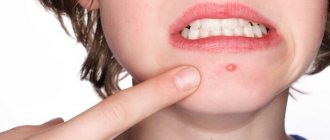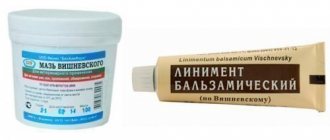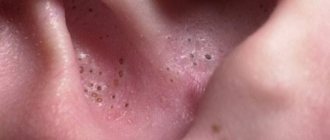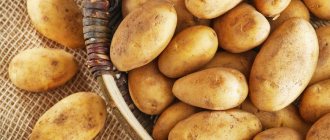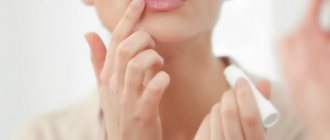You can treat 1st and 2nd degree burns on your own. With such injuries, the skin becomes red and blisters. Treatment of burns with blisters at home is carried out using folk remedies (baths, ointments, infusions) or special medications (creams, antiseptic sprays).
You can treat 1st and 2nd degree burns at home
First aid for burns with blisters
The appearance of blisters on the affected area indicates deep damage to the skin or a 2nd degree burn.
Factors to consider before administering first aid:
- Damage area. 1st degree burns that occupy a large area (more than 10%) of the skin require medical intervention regardless of location. As a rule, when receiving extensive injuries, a person is in a state of pain shock and cannot soberly assess his condition.
- Age of the victim. A child has a lower pain threshold, so he will feel the pain from a burn more acutely. Another important factor is that children under 6-8 years old have thinner skin, which is easier to injure. Accordingly, even with a minor burn, there is a high risk of damage to muscles and ligaments. For this reason, it is best to see a doctor immediately after injury in young children.
- Localization. The most dangerous and difficult to treat are burns of the face and mucous membranes.
It is necessary to call an ambulance for grade 2 injuries that are larger in area than the size of your palm.
All burns are divided into 4 types:
- thermal (appears when the skin comes into contact with hot objects, hot water or fire);
- electrical (occurs when struck by lightning or electric shock);
- chemical (occur due to exposure of the skin to industrial or household chemicals, heavy metals);
- radiation (appears due to radioactive sources; sunburn also belongs to this type).
You can get severe burns from prolonged exposure to direct sunlight.
Post-burn complications: nausea, increased or decreased temperature, chills, rapid heartbeat.
Emergency first aid for burns step by step:
- Try to quickly determine the extent of the burn. This can be done by looking at the area and depth of the damage. Serious injuries are also indicated by symptoms such as: the appearance of blisters with blood streaks, charring (blackening) of the skin, the formation of a yellow or brown burn crust, and a complete absence of pain for the victim. If you suspect deep damage, you should call an ambulance. 3rd and 4th degree burns do not need to be treated with cold water.
- Grade 1 and 2 injuries require cooling. A household burn is easiest to treat with cold water. The liquid should not be icy, the optimal temperature is 12-19°C. The affected area should be kept in cold water for 10 minutes. The procedure will help relieve pain by reducing the sensitivity of nerve endings.
- Applying a bandage. If there is clothing on the affected area of skin, it must be cut off very carefully. Damaged skin should not be touched or attempted to be cleaned of any pieces of fabric, resin, etc. The burned area should also not be treated with various herbal decoctions or solutions like brilliant green. Any clean and dry fabric will be suitable for making a bandage. A burn on a finger requires the use of additional material (such as a bandage). It must be moistened with cool water and placed between your fingers to prevent them from further gluing.
- The use of painkillers. The victim may also need antipyretic medications. You need to focus on the symptoms that bother a person after injury. Often, basic medications are suitable to eliminate them: Paracetamol, Aspirin, Ibuprofen.
Read also: Why does women's urine smell?
Apply a clean bandage to the damaged area
This first aid scheme is the same for almost all household injuries. With its help, you can treat a thermal burn with boiling water, hot oil or steam. This principle also neutralizes sunburn and damage left by cupping on the back.
If you are injured due to household chemicals, you need to wash the affected area more thoroughly and for longer. The treatment time with cool water should be increased to 20-30 minutes. The procedure can be completed as soon as the severe burning sensation disappears.
In some cases, it will be appropriate to use the ointment immediately. For example, if small blisters appear during overexposure of medical jars, they can be eliminated using products such as Bepanten plus or Panthenol.
To avoid repeated thermal damage, do not leave medical cups in place for more than 10 minutes.
What to do at home if you have a burn with blisters
The affected area should be treated with medications immediately after removing the bandage. Ideally, it should be removed by a specialist, since only he can accurately assess the extent of the damage and prescribe the most appropriate medications. You should also take painkillers before removing the bandage. For greater effectiveness, the injured area should be treated with an anesthetic (for example, lidocaine solution).
What not to do:
- apply vinegar or soda to the affected area;
- treat the burned area with iodine;
- sharply remove the bandage from the burn;
- lubricate the injured area with fermented milk products.
Vinegar should not be used to treat burns.
Under no circumstances should you buy homeopathic remedies to treat burns. Despite their rather high cost, they do not help at all.
Preparations for external use
How to remove blisters? To do this, you need to use external medications for 2-5 days. They act directly on the affected area, so they help quickly get rid of blisters and redness.
After using medications, you need to take intensive care of injured skin. It will peel for some time, so it is best to use the most accessible moisturizing and softening product: Vaseline. It is highly undesirable to use creams with fragrances.
The best pharmaceutical products for burns:
- D-Panthenol. A product that helps speed up the healing of burned skin. Used to treat burns of all types. The drug must be applied in a thin layer to the injured area. The medication should be smeared 3-4 times a day, lightly rubbing it into the skin. The cream should be used until the burned area is completely healed.
- Furacilin. The medicine is sold in the form of tablets for the preparation of an antiseptic solution. The drug is used for burns of 1st, 2nd and 3rd degree. It should be applied at the moment when the blister has just formed. It is also recommended to use an antiseptic before applying any healing cream or ointment. If a burn blister bursts, then Furacilin will be necessary to treat the affected area. It should be used 2-3 times a day to avoid contamination of the wound. The product helps with any burns.
- Miramistin. An antiseptic sold in the form of a solution and spray. Easy to use, suitable for relieving deep and superficial burns. The medicine also has a bactericidal effect. It must be applied during the initial treatment of burned skin, as well as before using various ointments. For sun and chemical burns, you can apply a bandage soaked in a 0.01% Miramistin solution and change it once a day.
- Bepanten. An ointment that accelerates tissue regeneration. It can be used to treat superficial thermal burns. The product is also suitable for subsequent care of damaged skin, as it has a moisturizing effect. Bepanten should be used 1-2 times a day. The medication should be applied in a thin layer and rubbed in lightly.
- Pantoderm. Moisturizing and regenerating ointment. With its help, you can treat shallow burns (in particular sunburn). In order to get the fastest result, the product should be applied 2-3 times a day.
Read also: What pills to take for heart pain
D-Panthenol will help the burn heal faster
Important! Minor superficial burns heal well without the use of regenerating agents. Such drugs are needed to speed up this process, but their use is not mandatory. It is much more important to use antiseptic sprays and solutions to protect the affected area from various contaminants.
To quickly treat burns, you can use special plasters (Cosmos, Branolind N, Parapran). Such medications help when the blister has already swelled and you want to remove it as quickly as possible. Antibacterial patches are impregnated with a special lotion that accelerates tissue healing.
Thermal burns
- Cool the burn area with cold water.
Apply a cloth soaked in it, carefully pour water onto the damaged area, or simply lower it into a container of water. Under no circumstances should you use snow or ice ; such a temperature difference can lead to worse consequences, including frostbite and damage to large areas of the skin. - Then you need to gently blot with a soft cloth, gauze, or napkins to dry the skin.
- Treat the burn and the area around it with an antiseptic. Furacilin, a weak solution of potassium permanganate (potassium permanganate), and chlorhexidine are suitable. You can use hydrogen peroxide. Every home medicine cabinet has at least one of these products.
- Apply a thin layer of antibacterial ointment to the burned area and everything around it. Doctors recommend Levomekol, Bepanten. Olazol, the foam of which also has an analgesic effect, and Panthenol help well with second-degree burns.
- Cover the ointment with a sterile cloth, gauze, special anti-burn wipes soaked in special agents, bandage it or secure it at the site of injury.
- If the pain is very severe, you can take a pain reliever.
- Repeat the dressing after 4 - 6 hours, examining the burn site, carefully removing the layer of ointment, treating it with an antiseptic and lubricating it again.
Anti-burn products in pharmacies are presented in a wide range, so any pharmacist will tell you which one is best to use. We must remember that expensive does not mean the best; you need to choose based on the situation and individual characteristics.
You can get second-degree burns with blisters not only from contact with steam, hot liquids or objects. Marks on the body along with severe pain can leave chemical burns when in contact with acids or alkalis .
Treatment with folk remedies
Folk remedies are not as effective as pharmaceutical ones, but they can be used for minor superficial burns. Moisturizing ointments for the care of damaged skin can be made independently, using Vaseline or propolis as a base.
carrot dressing
You need to take 1 small fresh carrot and grate it. The crushed plant should be placed on a clean cloth or gauze. The finished bandage should be applied to the burned area and held for 40-45 minutes.
Before applying the compress, the carrots need to be chopped
Cabbage leaves can also be used as a natural dressing. They help relieve swelling and eliminate redness.
Aloe for thermal burns
You will need a fresh aloe leaf. It must be washed thoroughly so that no dust remains on the plant. After this, the entire top skin of the aloe must be cut off and attached to the damaged area with a bandage or gauze.
The top part of the aloe skin needs to be cut off
Aloe has a soothing and antiseptic effect. The plant helps when the blister is already swollen. A kind of aloe dressing should be applied to the burn 2 times a day.
Calendula ointment
You will need: half a glass of water, 3 tablespoons of calendula, Vaseline. First you need to prepare a decoction, for this you need to pour boiling water over the calendula and put it on low heat. After 5 minutes, turn off the burner and let the broth brew for an hour. Subsequently, the mixture must be filtered and Vaseline added to it in a ratio of 1:2.
Calendula ointment is good for getting rid of blisters
The product should be stored in a cool place, preferably in the refrigerator. The ointment works well for blisters. It should be applied 2-3 times a day to the burned area.
Propolis and beeswax
Propolis has a healing and antiseptic effect. The product is contraindicated for use by people prone to allergic reactions.
Read also: Tubal ligation
You will need:
- olive oil 100 ml;
- propolis 30 gr;
- beeswax 50 gr.
Propolis and wax need to be melted in a steam bath
Place all ingredients in a saucepan and melt using a water bath. The mixture must be brought to a homogeneous consistency. The ointment should be stored in refrigerators and should be warmed before use. If necessary, apply the product to the affected area in a thick layer 2 times a day.
Linden infusion
You need to take 1.5 tablespoons of linden and pour 300 ml of boiled hot water. The mixture must be allowed to brew for 3 hours. After this, the infusion must be strained. Soak gauze in this mixture and then apply it as a compress to the burned area. After half an hour, the bandage can be removed. Linden infusion relieves redness and protects the injured area of skin from infection.
Linden infusion relieves redness from the burned area
Herbal bath
To make a bath, it is best to take a ready-made herbal mixture (200 g). You can make it yourself, but to do this you need to first dry and grind chamomile, valerian root, St. John's wort, celandine, string and sage. All these herbs together give a healing and soothing effect, thanks to which the burn stops hurting.
To prepare the bath you need to use dried crushed herbs
200 grams of herbal mixture should be placed in a bowl of warm water. The container should contain 3.5-5 liters of liquid. The mixture must be allowed to cool and brew for 2 hours. As a result, the bath should be cool. The affected area should be dipped into it for 15-20 minutes.
Plantain for blisters
To prepare a medicinal infusion, you need to take 2-3 tablespoons of crushed plantain leaves (dried or fresh). They need to be filled with a glass of hot boiled water and left for 10-12 minutes. After this, the infusion can be used to wet gauze and subsequently make a bandage. The product should be used once a day until the blisters disappear completely.
All traditional methods of treatment are strongly recommended to be combined with medications.
Plantain decoction will help burns heal
Question answer
Is it possible to open a burn blister?
To pierce or not is the most common question among people who have received a small burn with blisters. Therefore, it is worth remembering the basic rule: you cannot open a blister yourself (even with a sterile medical needle).
You cannot open a burn blister yourself.
What happens if a burn blister bursts?
The bubble is a kind of protection for injured skin that is susceptible to pathogenic microflora. If it bursts, you can get a number of complications, among which the most common is wound suppuration. In addition, after opening the bubble, a scar may form on the skin, reminiscent of a burn.
If the bubble bursts, the wound may fester
When do blisters go away after a burn?
Taking into account the use of drugs, the blisters disappear within a few days. Without drug intervention, the blisters disappear on average within a week. With minor superficial damage, the blisters go away quickly and without complications.
If the affected person has a persistently elevated temperature (up to 38-39 degrees) that does not subside within 12 hours, then you should consult a doctor. The same must be done if pain increases on the second or third day after receiving a burn.
When can you start treatment?
Treating burns with blisters at home is fine if the area is small. There are only a few exceptions that require mandatory medical supervision .
- Burns to the hands and feet are dangerous because the resulting scars can partially disrupt the functions of these parts of the body.
- Burns of the groin area also require medical attention; injuries are extremely painful at any degree of damage, healing is slow, with complications.
- Facial burns not only lead to the formation of ugly scars. The eyes and mucous membranes suffer; only proper treatment under medical supervision will help to avoid extremely unpleasant and even irreversible consequences.
- The appearance of many small blisters next to each other: this may indicate deep damage to a large area of the body surface. The blisters will merge into one or several huge ones, which will easily burst and become infected.
In other cases, treatment can begin immediately after first aid.
How and with what to treat burn blisters at home?
If the blister is not destroyed, it is enough to apply ointments that relieve swelling and change sterile dressings twice a day.
When the germ layer of the skin is restored and a scar forms, the bubble will dry out and the dead skin will come off on its own.
If it was not possible to avoid damage to the blister, it is necessary to begin specific treatment aimed at preventing the development of the inflammatory process and the appearance of cracks during healing.

